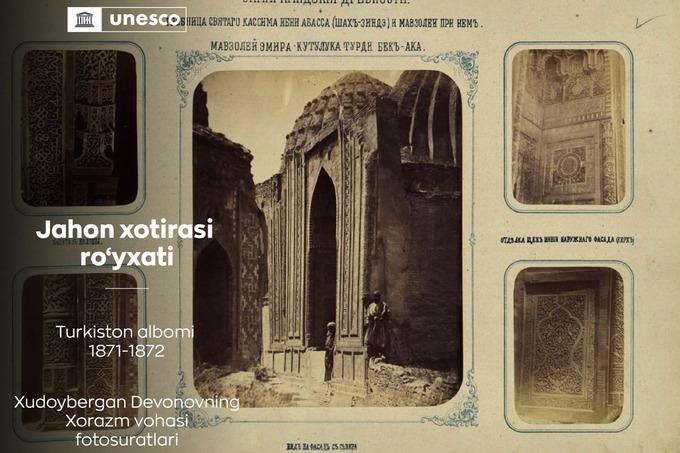At the 10th meeting of the UNESCO Memory of the World Committee for Asia and the Pacific in Ulaanbaatar, Mongolia, two nominations of Uzbekistan’s National Commission for UNESCO were included in the Memory of the World Register. This announcement was reported by the press service of the Uzbekistan Art and Culture Development Foundation.
The nominations “Turkiston Album (1871−1872)” and “Images of Khorazm Oasis Khudoybergan Devonov (1879−1937)” were added to the Memory of the World Register.
“Documentary heritage in the form of a collection of photographic negatives and photographs testifies to the historical and cultural uniqueness and local originality of Khorazm (situated in the lower reaches of the Amudaryo river, Khorazm oasis) and historical and cultural transformations during the late XIX and the first three decades of the XX centuries,” the message says.

The nomination “Turkiston Album (1871−1872)” comprises a collection of rare photographs and color images of scientific and historical value, stored in the archives of the National Library of Uzbekistan. “Turkiston Album” consists of historical, archaeological, ethnographic and handicraft sections. The album distinguishes itself through its comprehensive and original compilation of materials sourced from national photographs.
This compilation was assembled between 1871 and 1872, encompassing four distinct sections — archaeological, ethnographic, craft, and historical — spanning across ten volumes. The archaeological and ethnographic segment of the album was curated by orientalist A. L. Kuhn, while materials on crafts were prepared by agronomist M. I. Brodovsky and botanist I. I. Krause. V. P. Ivanov contributed to the section on painting, and M. A. Rotmeister focused on military history. The photographic content of the “Turkiston Album” was captured by N. N. Nekhoroshev.

The second nomination, “Images of Khorazm Oasis by Khudoybergan Devonov (1879−1937)”, showcases the photographic collection of Khudoybergan Devonov, a pioneering Uzbek photographer, cinematographer, director, and cameraman from Khiva.
Devonov’s collection provides a comprehensive visual narrative of various epochs in Khorazm’s evolution, spanning the reigns of Muhammad Rahim Khan II, Feruz (1864−1910), Asfandiyar Khan (1910−1918), and the formative years of the Khorezm People’s Soviet Republic (KhNSR, 1920−1924) and the UzSSR (1925−1937). These items are the only visual evidence of the reaal events in the crucial moments of Turkiston region’s history, the Foundation noted.





